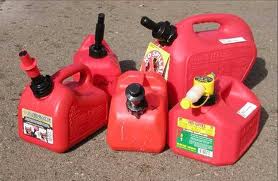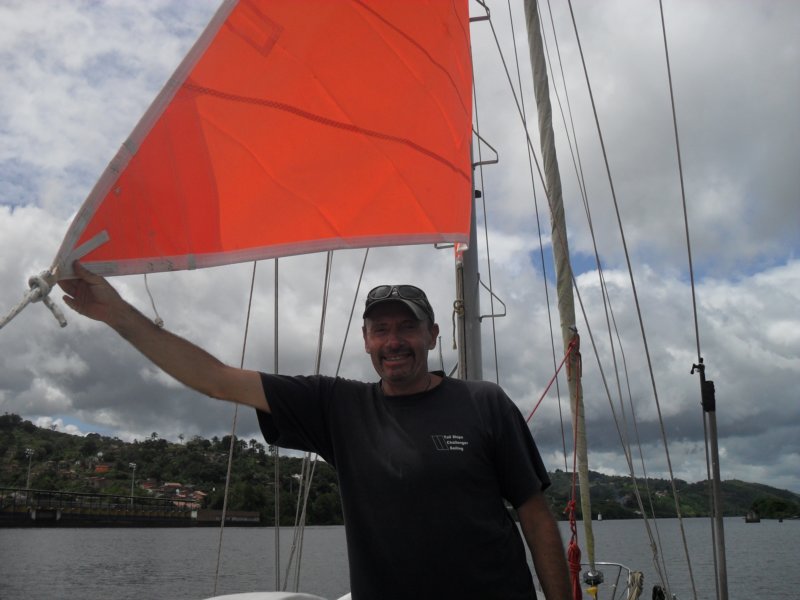SIMON'S OCEAN SAILING TIPS

1. Gas and the consequences of a leak sparking an explosion is probably your biggest risk on the boat. You need to be paranoid about gas. Fortunately there are some tips here that properly followed, mitigates this risk. I will go though the gas safety tips first then cover more day-to-day issues.
2. Install at least one gas alarm and preferably more than one in your boat. Make them fully separate to each other. Have a sensor near your cooking.
3. Gas sinks to the bottom of your boat. Get in the daily practice of a bilge gas-and-water pump. We do 50 hand pumps of the bilge at 9am every day when underway. When things like this become habit, they become easy.
4. Keep a keen nose for gas and tell your crew the same. If you smell any gas, it's a bad thing.
5. Best cylinders to carry for world cruising are 13kg propane cylinders. We bake bread daily for 4-5 people and have copious cups of tea (what. I'm English.), and a cylinder lasts us 4-6 weeks. Note that I do not use gas to heat any water directly, only for cooking.
6. Have at least two cylinders. It is so easy to lose a cylinder. I have three (1 x 19kg, 2 x 13kg).
7. The only country that we found difficult to obtain gas was Brazil (they have different regulator fittings) but I eventually managed to find a source there.
8. Don't give your gas cylinders to somebody you can't trust. I have taken taxis to get bottles filled up myself rather than lose sight of the bottles.
9. Carry several spare regulators as without them you aren't cooking with gas. I have five and have gone through four in the past three years.
10. Whenever changing regulators turn the gas on and put dishwashing liquid in over joints in the pipe, esp. around the oven connection. Check for leaks.
11. Be discriminating in your choice of gas cylinders. Make sure yours are good from the start.
12. Paint the lower half of the cylinder in 2-pack epoxy.
13. Always stow gas cylinders on deck. Butane/propane is heavier than air and any leak will end up at the bottom of your boat.
14. Have a gas shutoff valve next to your cooker so if there is any issue you can turn off the supply quickly. Mine is right in front of my face in the galley and is actually defaulted to the "off" position as switching it on is like switching on a light.
15. When opening your valves, only open them half a turn. Then people know that they are on or not. Simple yet valuable tip this one.
16. Lash your cylinders! Properly!
17. If you don't have lighters integrated into your stove, electric spark-guns are very effective. Have one anyway as a backup. Just don't use matches, they can clog up sinks very easily.

1. The key to light wind sailing is to create apparent wind for yourself (ideally on the beam), thereby sailing on that apparent wind and extracting a much greater range motor-sailing than if you were to motor without sails.
2. When using your sails as foils (ie. when you are not using them as kites downwind) it is easier to carry the genoa in light winds, as it does not have to deal with the weight of the boom. In light winds you want your engine (the sails) to be as light as possible.
3. Avoid over-sheeting your sail (pulling the sheet in too hard). On an ocean with decent swells as can be expected for much of the time, the light wind will not be sufficient to keep your sails inflated at all times due to this swell. Over-sheeting is not the answer.
4. If a preventer helps to keep things stable, then use it.
5. Most (although not all) boats' wind steering systems fail miserably at low speeds. Take it off.
6. When motor-sailing, use your autohelm rather than wind system for steering.

1. Always make sure your fuel tank fill cap is securely sealed - you don't want seawater to get into your tank during big seas.
2. Always stow at least 40 litres of fuel in separate containers.
3. Have a fuel pipe from an outboard so you can run direct from your spare tank to the engine if there is a problem with your main fuel tank.
4. Know exactly how much fuel your engine uses at certain engine speeds (ie. measuring the revs). Do this even if you have a fuel gauge. Although your engine books will give you this data, it is best to work it out for yourself. Here's how.
a) Fill your tank right up.
b) Run your boat at a given engine speed (rev count) for 20 hours of engine time.
c) Refill your tank and by doing so understand how much fuel you have used for that engine speed.
5. Keep a log on engine hours, every hour you use it. This may sound tiresome but it isn't. The log simply records revs, oil pressure, temperature, volts and engine hours. It takes thirty seconds each hour.
6. Put a clear sediment-viewer on the bottom part of your primary fuel filter. Then you can see if there is sediment or water in the fuel.
7. Have a dinghy bulb pump going from your main tank to the primary filter. This enables you to prime and bleed the primary and secondary fuel filters. For anyone who has experienced having to bleed a diesel engine without this, you will appreciate how gold this tip can be.
8. Always carry a good supply of primary and secondary fuel filters. For an around-the-world circumnavigation stock up on 20 (yes, twenty) of each. As soon as you leave your home port, things get harder to obtain and almost certainly get more expensive, particularly if you live as I do in the UK.
9. Always go to places where commercial boats go to fill up. Fishing boats, pilot boats, tugs etc. You will stand a much better chance of getting good quality fuel from these places as opposed to small private sources.
10. If you are forced to go somewhere smaller to procure your fuel, look and smell the fuel before filling up. Fill a glass jar and inspect it. If the fuel seems dodgy but you need it, run it through a coffee paper filter into a separate container than your main tank. Another good reason for this is to be very clear just how much fuel your are buying. Unscrupulous vendors will fiddle with the gauges.
11. Always make sure you can shut off your main fuel tank at the tank.
12. Gas bottles have left hand threads. Worth noting. Don't force things.
13. How much fuel do you need to cross an ocean? As a guide, on my first Atlantic Crossing I left the UK with 80L diesel (I have a 40' yacht with a 37.5hp Beta diesel engine). Now I carry 220L of fuel on crossings.
14. When crossing oceans, always have 200 nautical miles of motoring left in your tanks. That is, aim to arrive in port with the ability to motor a further 200 nautical miles. You don't want to run out of fuel in the last few hours of a trip.
15. Remember just how effective motor sailing can be! It tends to be underrated. Motor sailing can create apparent wind and by doing so be a huge range extender.

1. Always have at least three large water tanks on board that can not contaminate each other.
2. In addition, have at least 80L in 20L containers that are stowed elsewhere.
3. Have another 50x2L of old Coke bottles littered in crevices around the boat.
4. You need all this redundancy even if you have a watermaker on board. Watermakers can break.
5. Fit a salt-water tap to your sink. You can use this for 80% of your water needs when crossing oceans. For example hand washing, boiling eggs, potatoes in their skin. Other food can have 10% salt water mixed in saving your need to add salt.
6. When filling water tanks, drink water from the hose to taste it before filling the boat.
7. If water in your filling station is not drinkable, have a plan B - never be forced to accept dodgy water.
8. Even with all the precautions above, consider fitting a water filter for your drinking water. At the very least it will make your water taste better.
9. Have a rainwater collection device - I improvise one out of my tent above the cockpit, and have been able to collect 100L during two particularly rainy hours in Brazil.
10. As a minimum plan to have 5L per person per day.
11. In addition, when planning an ocean crossing ensure a 100% redundancy on the above figure. In other words, ensure you have 10L per person per day.

1. If you expect strong winds and heavy seas, fly your trysail. If you are thinking about doing it, you should have already done it.
2. Advantages of a trysail are twofold:
a) you can sail across the wind and broad reach and
b) you are much more stable. Less rocking is much more pleasant and safer in big seas.
3. The trysail is much stronger and about 50% smaller than the last reef in your mainsail.
4. Make sure your trysail (and storm jib) is dayglo orange, made from heavy duty dacron.
5. Fly the trysail with the tack about 1.5m above the boom. Use any reefing pennant attached to the clew as your sheet. I am able to leave my mainsail on the boom and simply open the gate and feed the slides of the trysail into the track of the mast above the mainsail. The sail is hoisted with the main halyard.
6. Trim your trysail just like it was a small reefed mainsail (which is what it is). You can either fix the boom and fly the trysail like a laser (ie. boom-less) or more conventionally by using the boom. You can also do a mix of both. With- or without boom is a similar thought process to pole- or no-pole on your genoa.
7. Fly your trysail high above deck level so it keeps its power even in the trough of big waves.
Sailing tips by Simon Smith, edited by James Kell.





